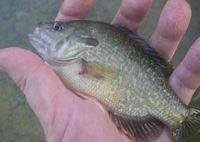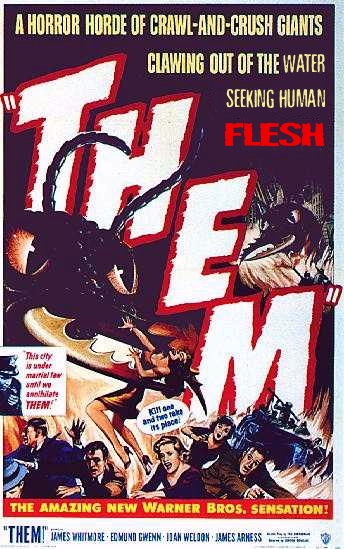 For the newly christened fly fisherman entomology is one of many disciplines that you didn’t know you needed to know. It’s all part of the initial onslaught that demands attention; learning how to cast, accumulating an outfit, where to go, what to do when you get there, then suddenly bugs, and even worse, Latin and bugs.
For the newly christened fly fisherman entomology is one of many disciplines that you didn’t know you needed to know. It’s all part of the initial onslaught that demands attention; learning how to cast, accumulating an outfit, where to go, what to do when you get there, then suddenly bugs, and even worse, Latin and bugs.
If you were like the rest of us, there were only two kinds of insects worthy of note, those that sucked blood, and those that left the pretty yellow fresco on your windshield.
You figured something was amiss when you spied your first fly table at the shop; big ones, little ones, red, olive, black, dry, wet, damp, weighted, unweighted, and all completely necessary. When you asked for a little assistance, the clerk started throwing dozens of little expensive fluff motes into a container, each at $2.00 or better.
You followed him well enough through the preamble; “…there will be some Pale Morning Duns in the morning, maybe fish some Stonefly Nymphs at midday, but it’s too early for the October Caddis..” But were thrown badly by his reference; “a small Black Gnat might pass for a Trico Spinner, and that creek is loaded with Little Yellow Stones, get some with the red egg sack..”
Your questions just got you deeper, because the only “Infrequens” you’ve encountered to date is a urinary problem.
The answers don’t answer much at this stage, and the couple of magazines you’ve read suggest that bug knowledge is key to everything. They’re right, but like government, they have an agenda in keeping you fearful and ignorant, they want you to buy their next issue.
Most magazine references are for the accomplished angler, they rarely cater to the fellow attempting to make sense of it all. The real story involves two of your favorite topics, where you’ve acquired vast skills already, sex and drinking.
The sex angle is simple, remember when your Poppa had “The Talk” about girls in High School? It went something like this, “kid, you’ll spend 10% of the time in bed, and 90% of the time having to live with them, pick a good one.”
Entomology translation: Fish feed 10% of the time on the surface, and 90% of the time underwater, you want to catch fish? Do likewise.
 The drinking portion is equally simple, Vodka is a clear alcohol, if you fill some small vials with it, you can collect bugs and bring them home. Isopropyl alcohol is a 70% solution available at any drugstore, it is the preferred bug marinade, but is not near as much fun to drink.
The drinking portion is equally simple, Vodka is a clear alcohol, if you fill some small vials with it, you can collect bugs and bring them home. Isopropyl alcohol is a 70% solution available at any drugstore, it is the preferred bug marinade, but is not near as much fun to drink.
Dry fly fishing is an addiction, more importantly it’s a luxury. It’s visual therefore easy to understand. You can see the naturals and can make intelligent decisions on which imitation to use. Nymph fishing is feel, not sight, it’s harder to learn, and confronts the angler with baffling complexity, which bug should I use?
It’s important to wean a new angler off of dry fly fishing quickly. They don’t yet understand the hellish consequences of dry fly purism, or the social consequences of floating fly addiction, they need a nudge to get them slinging lead.
Textbook Trout Entomology:
In a typical freshwater stream, 90% of the trout’s diet is underwater insects comprised of 3 major groups; Mayflies, Caddis flies, and Stoneflies. These insects can be further broken down by their behavior; clingers, crawlers, burrowers, and free-swimmers.
Burrowers and free swimmers are nearly impossible to observe without diving gear, so the bulk of the insects available to you for collection will be the clinger and crawler groups.
Mother Nature always uses the same camouflage scheme, light belly and dark back. As a rule the better the camouflage the better the survivability, you can assume that the insect’s dark back will be roughly the same color as the stream bottom. Note that in dense weed, the weed acts as the stream bottom, you will see local adaptation of color on the insects that live there.
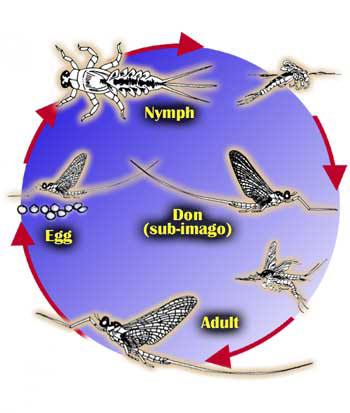 Whether you’re new to fly fishing, or are fishing an unfamiliar body of water, a little time spent in investigation usually yields some clues of what to fish. The clinger and crawler groups are readily available on underwater objects, rocks, sticks, and weeds.
Whether you’re new to fly fishing, or are fishing an unfamiliar body of water, a little time spent in investigation usually yields some clues of what to fish. The clinger and crawler groups are readily available on underwater objects, rocks, sticks, and weeds.
Armed with the Vodka vials, sample some underwater debris in the different types of water available. No need to collect everything, just make a mental census as you take selected specimens.
If you find yourself thinking, “..there is a ton of the little brown ones.” That is a good starting point for what to use. Having some in alcohol allows you to compare the flies at the shop with the naturals. If you are learning to tie flies, they are valuable “goals” to imitate, especially if you plan on fishing this body of water many times.
Congratulations, if you have made it this far you are now angling scientifically.
The Difference Between Wheat and Chaff
It is difficult not to go overboard, as the science of our sport is why we can out fish the fellow slinging salted clams. Identification of insects down to the species level is important to entomologists, but has little value to a fisherman. Insect scientists use “keys” to determine group and species , a series of yes/no questions that result in the exact Latin name for the bug.
Our interest ends when we know the color, size, and behavior. Color and size are fairly easy, as we have a sample in front of us, behavior requires a mixture of observation and deduction.
Key features of behavior include; how does it swim, is it readily available to trout all day (clinger, crawler), when and how does it emerge, how long will it live, and what is the mating behavior.
A white bowl that is 4-5 inches deep can reveal the swimming pattern. Toss a natural into the bowl and observe the motion, this will teach you what an appropriate retrieve should imitate. Small insects swim with small motions, a short retrieve will likely match the natural best.
- Is it readily available to trout all day?
Chances are yes, as the nymphs that you are able to collect are likely the clinger/crawler type. Cased caddis would fall into this designation, as would stonefly nymphs, damsel flies, and many mayflies.
When is a tough question. Insects emerge based on certain conditions, most importantly; temperature and light. Underwater nymphs are vulnerable as they have to shuck the nymphal skin and dry their adult wings. Mother Nature protects them as best she can by making them emerge at dusk – low light, predators are at a disadvantage.
This is why you can have really good fishing on overcast days, as clouds can diminish the light enough to trigger a hatch.
How it emerges determines what tools are available to you in your angling arsenal. If it crawls out of the water to emerge on dry land, your only option is the heavily weighted nymph. If it swims up through the column of water and pops out onto the surface, you can fish the heavy nymph(starting emergence), the unweighted nymph (the emerger), the emerger (part nymph part dry), and the winged bug (adult).
Here’s the rub. Remember the water is moving during all of this activity. The location of each of these phases will occur at different distances from the starting point. The insect may be carried hundreds of feet from where it started swimming up through the water, by the time it makes the surface, it may be 50 or 100 yards from where it started.
Despite all the different stages you have to imitate, some of these stages can be localized. If the insect lives in weed beds, the crawler activity will be localized there only, downstream only emergers and adults will be available. As the bulk of this activity occurs underwater and invisible to the angler, use the rise forms of the trout as a guide – did he take a dry, or something just under the surface?
Aquatic insects live out their lives underwater, they can exist as long as three years in the nymphal form, and will only last 7 days in the adult, winged flavor. The adult is a “sex-engine” – it’s mouth parts are sealed, so it cannot survive. In fact, the longest lived mayfly is the lowly Trico, it’s entire time out of the water is about 2 weeks.
- What is the mating behavior?
Males and females form a cloud above the water and go “Buck Wild.” Females then drop to the surface depositing egg packets, males share the human male trait by rolling over and snoring, males of any species are reluctant to cuddle.
Mating behavior doesn’t seem like it’s that important, but looks are deceptive.
In mayflies, the color of the wing tells volumes. Both emerging insects and mating insects are found on the surface, but only during an emergence will a nymph be as effective. There is no nymph activity when the insects return to the water to lay eggs.
The returning adult has transparent wings, the emerging adult has opaque wings, typically these are gray. This is a huge factoid for the fisherman, it tells him what flies will be successful.
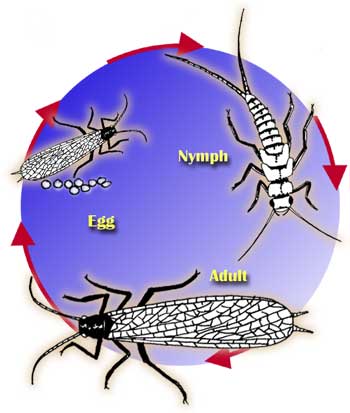 Forgive the generalities, as there could be nymph activity from an entirely different insect, another hatch occurring of the same insect, or a completely different one. A watershed is a complex entity, more than one bug can occupy the same stretch of water at once.
Forgive the generalities, as there could be nymph activity from an entirely different insect, another hatch occurring of the same insect, or a completely different one. A watershed is a complex entity, more than one bug can occupy the same stretch of water at once.
In summary, what distinguishes the fly fisherman from all others is the application of science and deduction. Observation and collection are powerful tools to assist you over the learning curve, and will give you precious insight into the behavior of both aquatic predator and its prey.
Armed with this knowledge, you can narrow your choices of fly size and pattern, and can learn how to retrieve your imitation akin to the natural, completing the deception.
Nowhere in all of this is Latin. Latin is for pretentious dry fly purists SOB’s that are attempting to make the club exclusive. Insects are “little yellow,” or “big Olive,” or “giant mean variegated bastard.”
…and you can tell that SOB I said so.
Tags: mayfly, stonefly, caddis, practical entomology, aquatic insects, trout food
 I can handle rejection but not if it’s a Chocolate Old Fashioned doing the rejecting. When you get to my age, you begin the downward spiral, taking something to get something up, taking something else to lower something, it’s like Hollywood drug therapy only worse.
I can handle rejection but not if it’s a Chocolate Old Fashioned doing the rejecting. When you get to my age, you begin the downward spiral, taking something to get something up, taking something else to lower something, it’s like Hollywood drug therapy only worse.
 For the newly christened fly fisherman entomology is one of many disciplines that you didn’t know you needed to know. It’s all part of the initial onslaught that demands attention; learning how to cast, accumulating an outfit, where to go, what to do when you get there, then suddenly bugs, and even worse, Latin and bugs.
For the newly christened fly fisherman entomology is one of many disciplines that you didn’t know you needed to know. It’s all part of the initial onslaught that demands attention; learning how to cast, accumulating an outfit, where to go, what to do when you get there, then suddenly bugs, and even worse, Latin and bugs. The drinking portion is equally simple, Vodka is a clear alcohol, if you fill some small vials with it, you can collect bugs and bring them home. Isopropyl alcohol is a 70% solution available at any drugstore, it is the preferred bug marinade, but is not near as much fun to drink.
The drinking portion is equally simple, Vodka is a clear alcohol, if you fill some small vials with it, you can collect bugs and bring them home. Isopropyl alcohol is a 70% solution available at any drugstore, it is the preferred bug marinade, but is not near as much fun to drink. Whether you’re new to fly fishing, or are fishing an unfamiliar body of water, a little time spent in investigation usually yields some clues of what to fish. The clinger and crawler groups are readily available on underwater objects, rocks, sticks, and weeds.
Whether you’re new to fly fishing, or are fishing an unfamiliar body of water, a little time spent in investigation usually yields some clues of what to fish. The clinger and crawler groups are readily available on underwater objects, rocks, sticks, and weeds. Forgive the generalities, as there could be nymph activity from an entirely different insect, another hatch occurring of the same insect, or a completely different one. A watershed is a complex entity, more than one bug can occupy the same stretch of water at once.
Forgive the generalities, as there could be nymph activity from an entirely different insect, another hatch occurring of the same insect, or a completely different one. A watershed is a complex entity, more than one bug can occupy the same stretch of water at once. On second thought, now might not be such a good time, what with
On second thought, now might not be such a good time, what with  I’m still struggling with the “bathe regular” concept, and the only “signature scent” I know is when someone complains.
I’m still struggling with the “bathe regular” concept, and the only “signature scent” I know is when someone complains.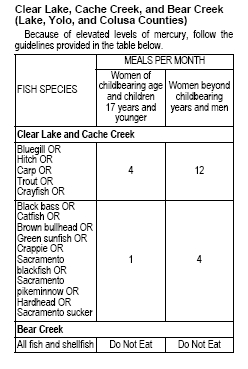 “Death Metal” usually is a type of rock and roll, but in my case the local fish are a close second.
“Death Metal” usually is a type of rock and roll, but in my case the local fish are a close second.
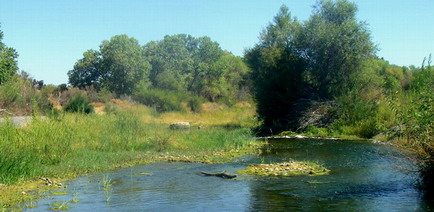
 Found my first evidence of mayflies. A snow white #16, saw one in the air, and found one adrift in some weeds. This is sure going to be easy to imitate. The presence of the riffle water and some weed beds likely was the cause, the ecology had undergone a change with the water depth. Riffle water increases the oxygen content, and some beds of elodea added cover for more varied bug life.
Found my first evidence of mayflies. A snow white #16, saw one in the air, and found one adrift in some weeds. This is sure going to be easy to imitate. The presence of the riffle water and some weed beds likely was the cause, the ecology had undergone a change with the water depth. Riffle water increases the oxygen content, and some beds of elodea added cover for more varied bug life. So what is it about the Northern latitudes that prevents anglers from baiting their own hook? The proud Norse heritage, the blond invaders that held Europe in terror, discovered the New World, and invented Volvo, are suddenly squeamish?
So what is it about the Northern latitudes that prevents anglers from baiting their own hook? The proud Norse heritage, the blond invaders that held Europe in terror, discovered the New World, and invented Volvo, are suddenly squeamish?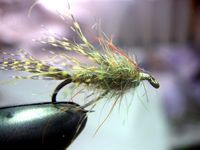 I mentioned the “Bird’s Nest” fly in last nights post, I had the privilege of knowing Calvert Bird years ago when it was created. Cal was one of the most singular and gentle fellows I’ve ever known, he had a weakness for coffee and wreath cake, which I exploited unmercifully.
I mentioned the “Bird’s Nest” fly in last nights post, I had the privilege of knowing Calvert Bird years ago when it was created. Cal was one of the most singular and gentle fellows I’ve ever known, he had a weakness for coffee and wreath cake, which I exploited unmercifully.


 Experience has driven home the lesson Never Predict Anything, just when you think you can’t miss, fate finds a new way to humble you.
Experience has driven home the lesson Never Predict Anything, just when you think you can’t miss, fate finds a new way to humble you. After landing the first fish, I felt even better, smallmouth bass, about 5″ long. Smallmouth? This creek shows promise…
After landing the first fish, I felt even better, smallmouth bass, about 5″ long. Smallmouth? This creek shows promise…